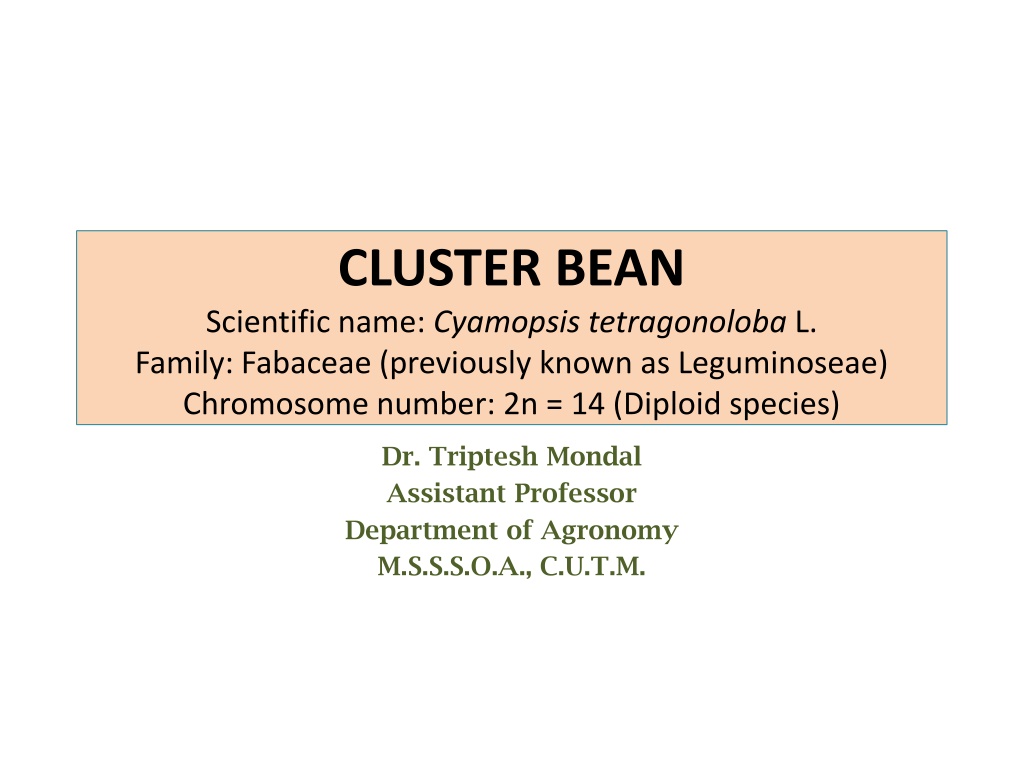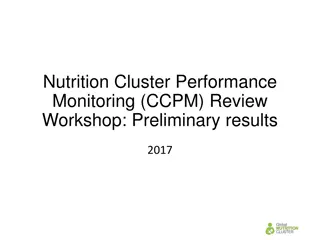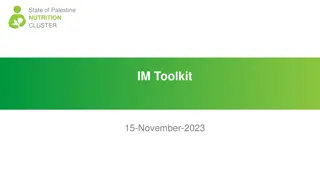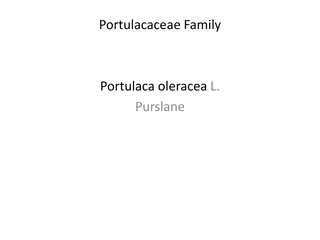Overview of Cluster Bean (Cyamopsis tetragonoloba L.) - Uses, Distribution, and Classification
Cluster beans, scientifically known as Cyamopsis tetragonoloba L., are valuable leguminous crops with economic importance due to their drought tolerance and industrial applications, particularly in gum production. They are cultivated for feed, fodder, and vegetable purposes, with their seeds rich in protein and minerals. Originating possibly from tropical Africa, cluster beans are extensively grown in India, notably in states like Rajasthan, Gujarat, and Punjab. This robust plant features trifoliate leaves, small flowers, and fleshy pods used as a nutritious vegetable. The classification of Cluster beans includes several species under the genus Cyamopsis.
Download Presentation

Please find below an Image/Link to download the presentation.
The content on the website is provided AS IS for your information and personal use only. It may not be sold, licensed, or shared on other websites without obtaining consent from the author. Download presentation by click this link. If you encounter any issues during the download, it is possible that the publisher has removed the file from their server.
E N D
Presentation Transcript
CLUSTER BEAN Scientific name: Cyamopsis tetragonoloba L. Family: Fabaceae (previously known as Leguminoseae) Chromosome number: 2n = 14 (Diploid species) Dr. Triptesh Mondal Assistant Professor Department of Agronomy M.S.S.S.O.A., C.U.T.M.
Economic importance and uses: Cluster bean is also known as gavar, gawar, guvar bean, guar etc. Guar or cluster bean, among leguminous crops is comparatively more drought tolerant crop. It is generally grown for feed, fodder and vegetable purposes. The fodder of guar as well as its grain are quite nutritive, rich in protein, fat and minerals. Guar provides edible pods which are used as vegetable. It can also be used as green manure crop in certain areas. Among dryland crops, guar occupies an important place in the national economy because of its industrial importance mainly due to the presence of gum in the endosperm. Guar gum is highly mucilaginous, which is being used in various industries such as textiles, cosmetics, explosives, paper, food processing etc. Seeds of guar contains large amount of galactomannan, which is a polysaccharide containing polymers of mannose and galactose in a ratio of 2:1 with many branches. Thus it has a viscosifying effect in liquids.
Origin and Distribution: Gillette (1958) pointed out that tropical Africa is its probably centre of origin because of more occurrence of wild species in that country. In India, area of cluster bean has increased rapidly in recent years due to establishment of gum industries. Guar is being grown mainly in Rajasthan, Gujarat, Haryana and Punjab. It is also grown in some parts of Uttar Pradesh and Madhya Pradesh. Rajasthan alone accounts for almost 53% of total guar seed production.
Classification: Genus Cyamopsis is an old world genus. There are four major species: (1) Cyamopsis tetragonoloba, (2) Cyamopsis senegalensis, (3) Cyamopsis serrata, (4) Cyamopsis dentata Botanical description: The plant of cluster bean is robust, erect, indeterminate annual usually grows to a height of 90-180 cm. Certain varieties may grow even more taller. The plant of cluster bean has a well developed tap root system. Some varieties have small hairs all plant parts whereas some varieties have glabrous plant parts. The leaves are trifoliate and toothed/serrated. The flowers are small, borne in short axillary racemes and are generally purplish white in colour and of self pollinating nature. The pods are somewhat flattened and are borne in a cluster, hence the plant is also known as clusterbean . Pods are fleshy beaked, 2.5 to 13 cm long. When the pods are tender, they are used as vegetable. Each pod contains 5-12 seeds. The seeds are square in shape & compressed. Average test weight of guar seeds is 25-40 g.
Climatic requirements: Cluster bean is a drought resistant and sun loving crop and can be grown successfully in areas where average annual rainfall is 300-400 mm. But the plants are susceptible to frost. Proper germination of seeds and root development takes place between 20 C to 30 C temperature. It is mostly grown as rainfed crop in semi-arid zones of northern India. It cannot withstand waterlogging condition. Excess soil moisture during early growth period and after maturation lead to lower seed quality. It is a photosensitive crop, comes into flowering and fruiting when sown in kharif season only. Soil condition: Cluster bean can be grown on all types of soil except heavy soils and poorly drained soils. It thrives best on well drained medium to light soils with pH range of 7.0 - 8.5.
Varieties: Durgapur Safed (dual purpose variety): It was evolved at Durgapura, Jaipur, Rajasthan by pureline selection from local collection. FS-277 (dual purpose variety) Ageta Guara (developed from a cross between strain no. 235 and FS-277): It is used for grain purpose HFG-119, HFG-156: These are forage varieties Guara-80 (forage variety) Bundle Guar-1, Bundle Guar-2 D-111, D-128 AGFRI-212-9, AGFRI-2365-2 Cropping systems: Cluster bean is usually grown in rotation with Pearl millet, Wheat and Chick pea as a pure crop for grain purpose. For fodder purpose the following 1 year crop rotations could be adopted: Pearl millet + Guar-Berseem/Egyptian clover, Sorghum + Guar Berseem - Maize + Cowpea, Guar Berseem Maize + Cowpea
Field preparation: Two to three ploughings with local plough or two cross harrowings and a planking is sufficient to prepare the seedbeds. There should be enough soil moisture in the field at the time of sowing. Seed and Sowing: Sowing time: Sowings are usually done in March for summer crop in north India and in June-July for rainfed kharif crop. Early planting results in more vegetative growth, leading to lodging of plants and ultimately low seed yields. The crop for fodder may be sown from April to mid July. In this case, early sown crop makes luxuriant growth under irrigated condition and gives high yield of fodder. Seed treatment: Seed treatment with hot water at 56 C for 10 minutes controls bacterial blight disease (most serious disease of guar).
Seed rate: 15 to 20 kg/ha is sufficient for grain crop, while 40-45 kg/ha should be used in case of fodder crop. Spacing: A combination of 45 cm row to row and 15 to 20 cm plant to plant is best for normal sown grain crop. In late sown crop row spacing of 30 cm instead of 45 cm should be recommended. Closer spacing is good for fodder crop. Manures and fertilizers: 20 kg/ha nitrogen should be used as starter dose at the time of planting. It is desirable to apply 40-60 kg P O /ha to ensure good yields from grain crop. All the fertilizer should be applied at the time of sowing in furrows 4-5 cm below the seed. When guar is sown on poor soils, it is desirable to apply about 10-20 t/ha well decomposed FYM or compost about 1 month before sowing.
Water management: The crop sown in July does not require any irrigation if the rains are normal and timely; otherwise one or two irrigation may be needed. For a summer crop, irrigation should be given at 12-15 days interval. During kharif season, drainage is more important than irrigation as guar does not tolerate water stagnation in the field. Weed management: One or two hand weedings are essential in kharif season crop to control the weeds in the initial stages of plant growth. For seed crop, fluchloralin (basalin) can be used at the rate of 1 kg a.i. per hectare. It should be used as pre-planting dose and incorporated well in upper 10 cm of soil prior to sowing. It controls annual grasses as well as broad leaved weeds.
Harvesting and threshing: When the crop is grown for fodder purpose, the plants are cut when in flowering or when the pods are beginning to form (i.e., 50-85 DAS) . When the crop is grown for seeds, the crop is left until the plants are mature. Crop is harvested with the help of sickles and then dried and threshed. Yield: A good crop of cluster bean or guar yields about 25-30 tonnes of green fodder/ha or 1.0-1.5 tonnes of grain/ha.

















































